Abstract
The anti-tumour action of methylene dimethane sulphonate (MDMS) has been further investigated in relation to its immunosuppressive properties. Following a dose of 10 mg/kg, the proportion of permanent regressions of Yoshida lymphosarcoma transplants is lower in animals treated during the first 5 days of tumour growth. Re-implants on day 28 to those animals in which regression of the tumour had occurred indicated that the immune response to the tumour increases during the first 7 days of tumour growth.
Studies of the effect of MDMS on the primary antibody-forming cell response of mice to sheep red cell antigens showed this drug to be an immunosuppressant comparable in strength to x-radiation. MDMS given to rats prior to tumour transplantation also acted as an immunosuppressant in this system resulting in an increased rate of tumour growth. For both responses the maximum immunosuppressive effect was obtained when the interval between drug administration and antigenic challenge was minimal.
Full text
PDF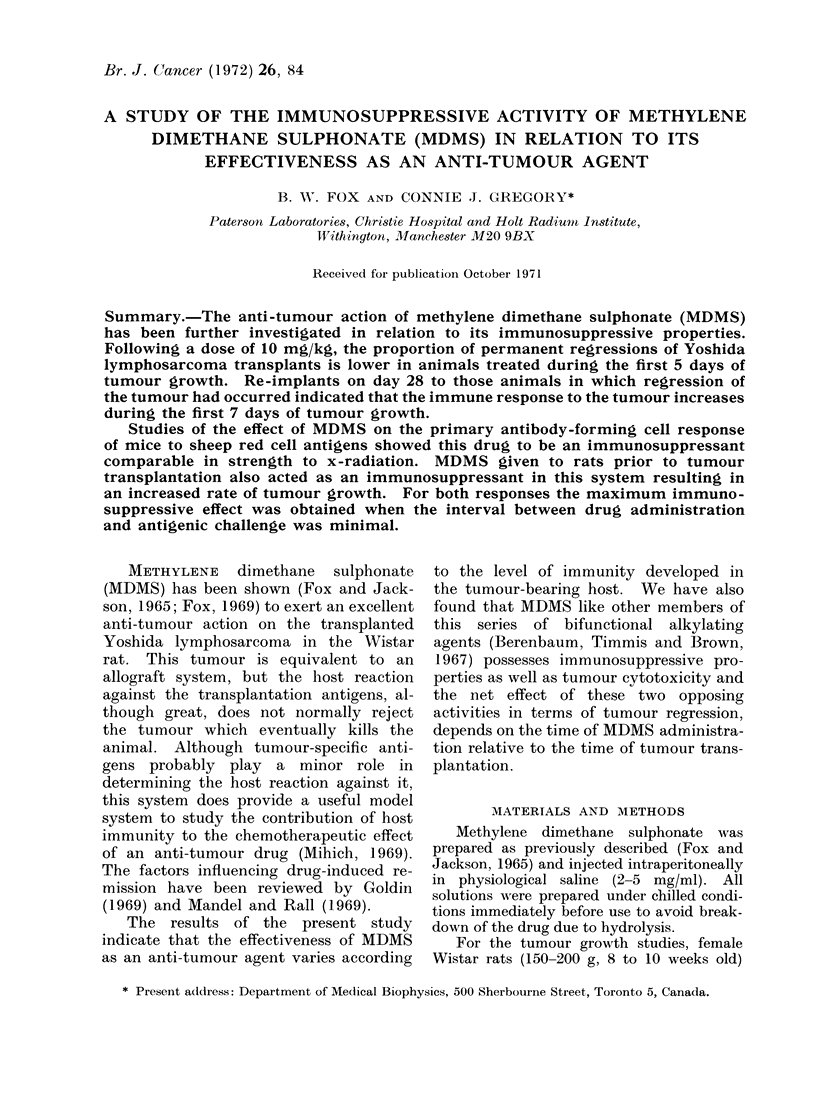
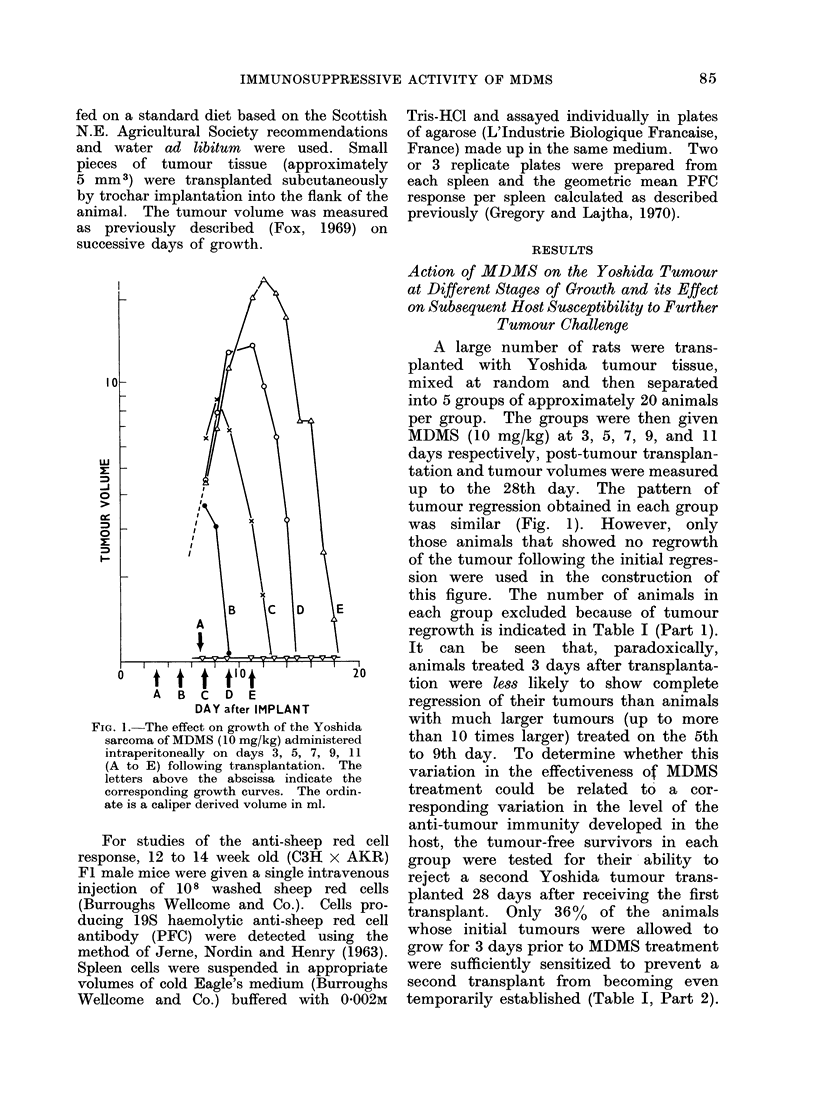
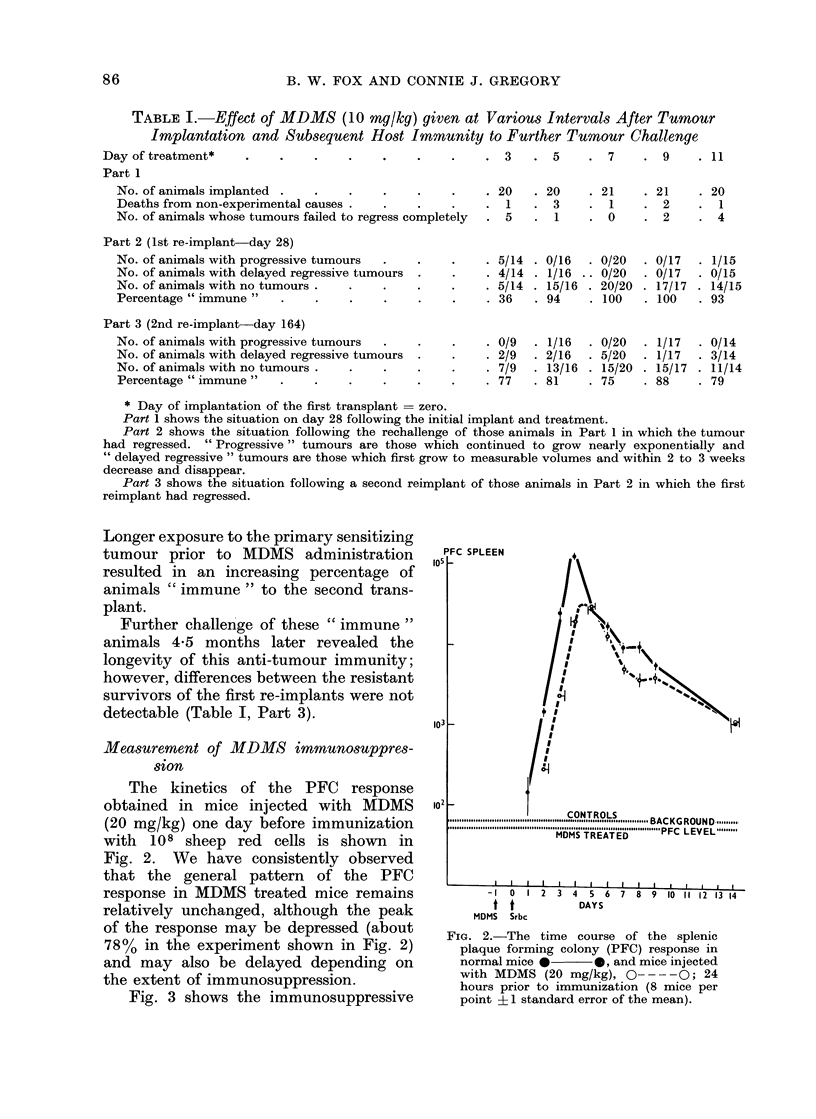
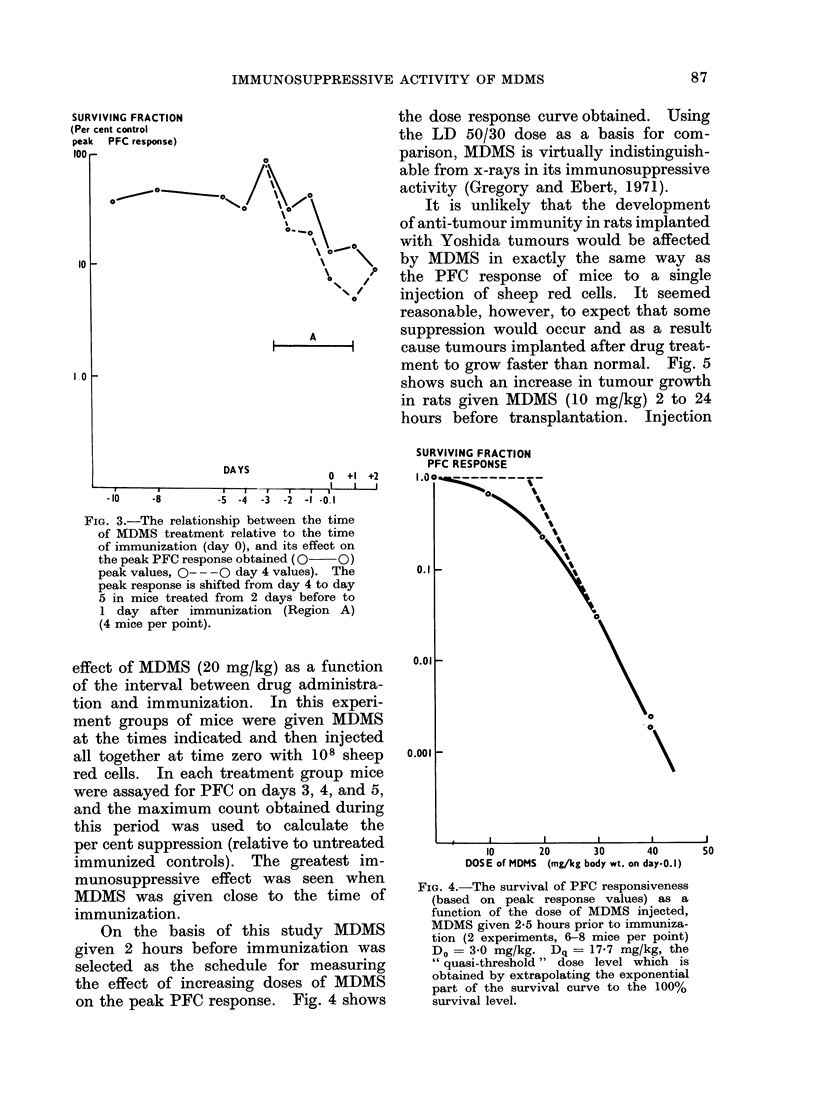
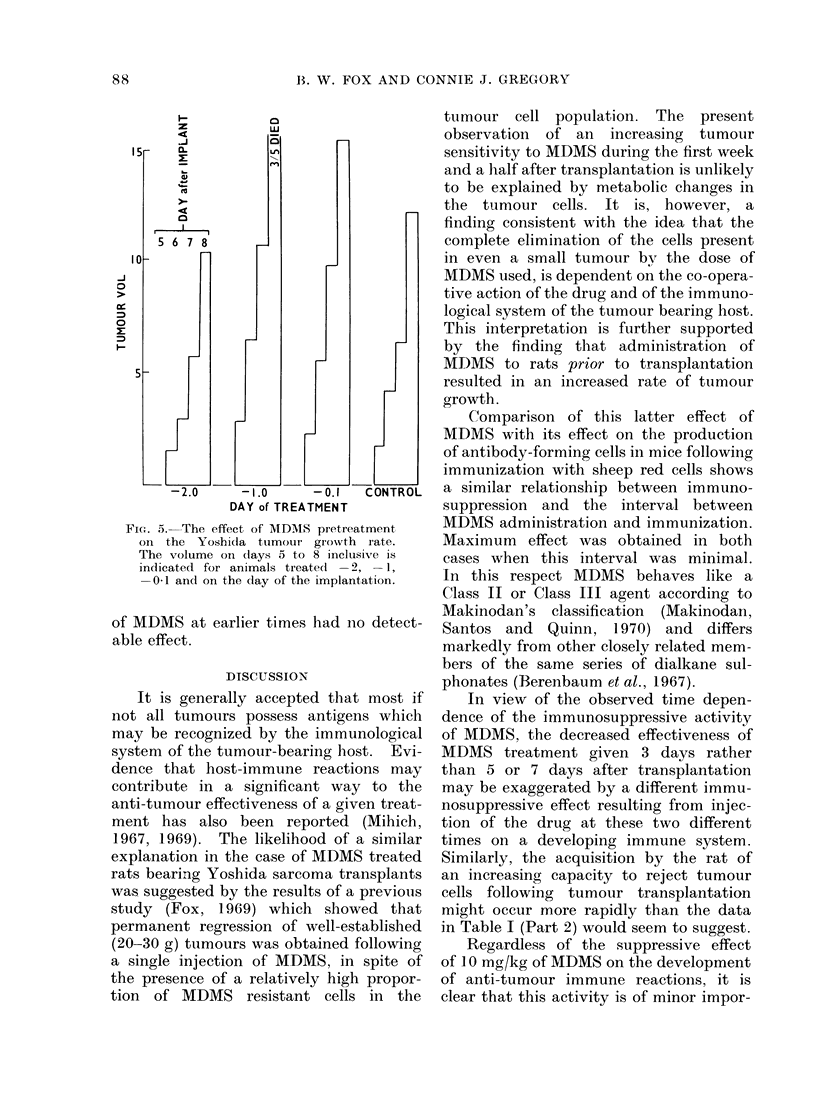
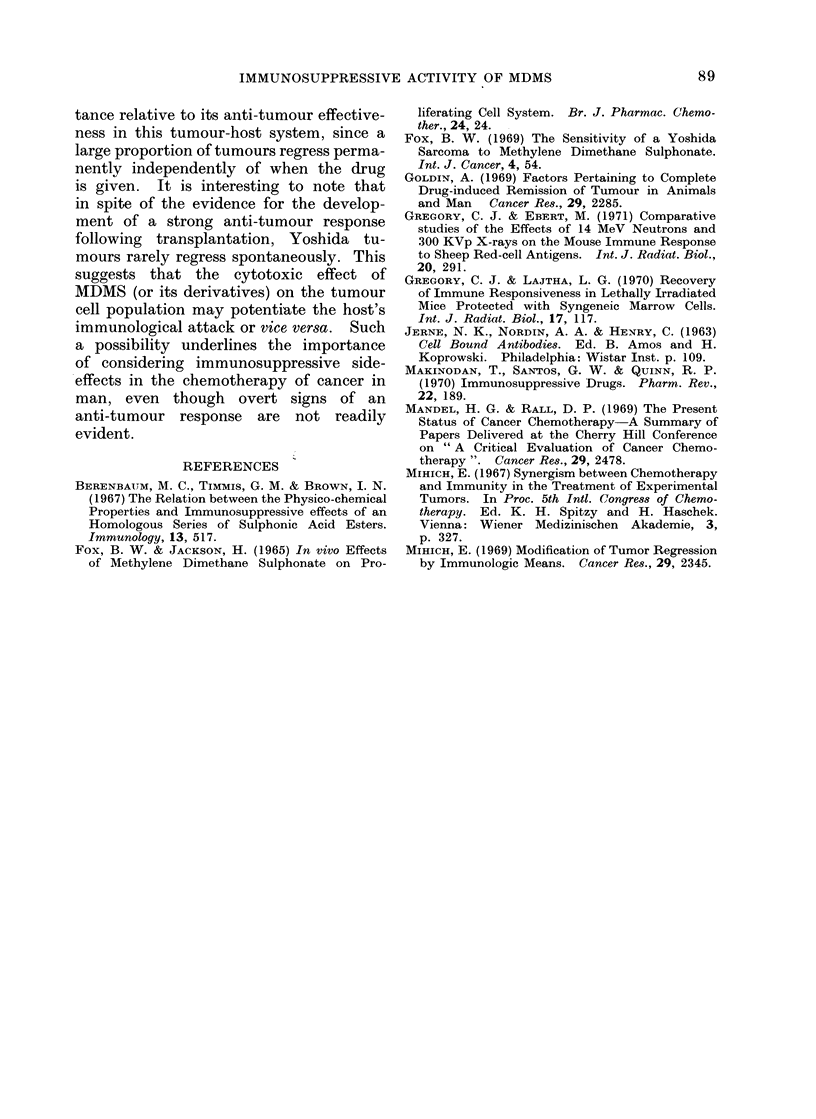
Selected References
These references are in PubMed. This may not be the complete list of references from this article.
- Berenbaum M. C., Timmis G. M., Brown I. N. The relation between the physico-chemical properties and immunosuppressive effects of an homologous series of sulphonic acid esters. Immunology. 1967 Nov;13(5):517–522. [PMC free article] [PubMed] [Google Scholar]
- FOX B. W., JACKSON H. IN VIVO EFFECTS OF METHYLENE DIMETHANESULPHONATE ON PROLIFERATING CELL SYSTEMS. Br J Pharmacol Chemother. 1965 Feb;24:24–28. doi: 10.1111/j.1476-5381.1965.tb02077.x. [DOI] [PMC free article] [PubMed] [Google Scholar]
- Fox B. W. The sensitivity of a Yoshida sarcoma to methylene dimethane sulphonate. Int J Cancer. 1969 Jan 15;4(1):54–60. doi: 10.1002/ijc.2910040108. [DOI] [PubMed] [Google Scholar]
- Goldin A. Factors pertaining to complete drug-induced remission of tumor in animals and man. Cancer Res. 1969 Dec;29(12):2285–2291. [PubMed] [Google Scholar]
- Gregory C. J., Ebert M. Comparative studies of the effects of 14 MeV neutrons and 300 kVp X-rays on the mouse immune response to sheep red-cell antigens. Int J Radiat Biol Relat Stud Phys Chem Med. 1971;20(3):291–296. doi: 10.1080/09553007114551171. [DOI] [PubMed] [Google Scholar]
- Gregory C. J., Lajtha L. G. Recovery of immune responsiveness in lethally-irradiated mice protected with syngeneic marrow cells. Int J Radiat Biol Relat Stud Phys Chem Med. 1970;17(2):117–126. doi: 10.1080/09553007014550161. [DOI] [PubMed] [Google Scholar]
- Mandel H. G., Rall D. P. The present status of cancer chemotherapy--a summary of papers delivered at the Cherry Hill Conference on "a critical evaluation of cancer chemotherapy". Cancer Res. 1969 Dec;29(12):2478–2485. [PubMed] [Google Scholar]
- Mihich E. Modification of tumor regression by immunologic means. Cancer Res. 1969 Dec;29(12):2345–2350. [PubMed] [Google Scholar]


